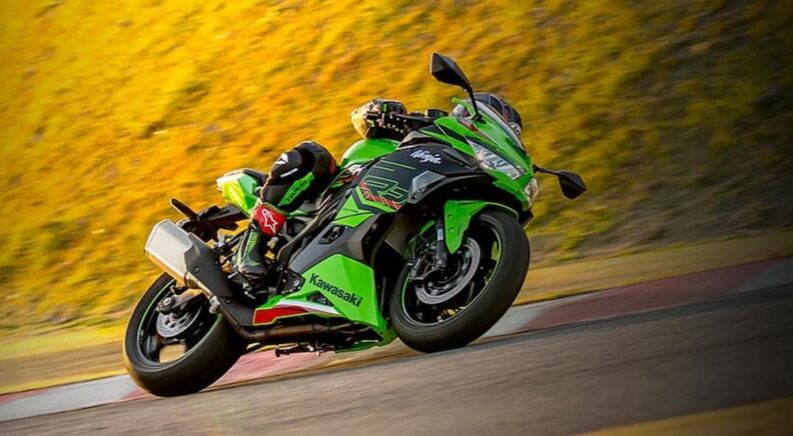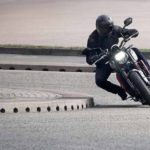We have an insatiable need for speed that draws us to potent, two-wheeled powerhouses that promise plenty of thrills in the saddle. However, that need is not solely ours. It is not proprietary but unites people around the world. It is a primary focus and a central inspiration throughout the transportation industry, from American automakers like Chevrolet and Ford to Japanese motorcycle manufacturers like Kawasaki, Honda, Suzuki, and Yamaha. Each company’s goal is to exceed our expectations and deliver a jaw-dropping experience behind the wheel or the handlebars.
While this insatiable need for speed unites us, our pursuit looks vastly different in America than in Japan. We operate on the “bigger is better” mentality because it often means more power and capability. However, the popularity of Japanese 400cc class motorcycles on their native soil tells us a different story. It paints another picture that limits how Japanese riders can pursue their penchant for adventure and speed. And, as it turns out, that’s by design.
The Outlaw Image Seen ‘Round the World
When you start researching Japanese motorcycle laws and regulations, there is plenty of information about how difficult it is to obtain your motorcycle license. However, there needs to be more explanation as to why that is. Some rumors suggest that the rise of road racing perpetuated increased crime and antisocial behavior among riders, forcing businesses, schools, and other organizations to restrict motorcycles from the premises. The picture painted is a Japanese version of a Sons of Anarchy episode.
By the late 1970s, Japan established new motorcycle regulations that are still in place today. The rules were designed to curtail motorcycle outlaws looking for trouble and reduce the increasing crime rate nationwide. And while the laws have accomplished those goals, they have also made it incredibly difficult for riders to obtain their license for anything beyond a 400cc class motorcycle. As a result, 400cc bikes (or smaller) are the norm in Japan.
Japan’s Three-Tire Motorcycle Licensing System
Japanese riders have three options to own and ride a motorcycle legally–small class, ordinary class, and heavy class. The small-class licensing is limited to bikes with up to a 125cc engine. However, even with a license, you can’t ride a small-class motorcycle on an expressway, which may not be a big deal since Japanese expressways are notoriously expensive.
Most riders in Japan have an ordinary-class motorcycle license, which is available for 125cc to 400cc bikes. The heavy-class license, which is for bikes over 400cc, requires jumping through many proverbial hoops after passing a ridiculously challenging test. Of course, some hoops trickle down to 400cc bikes, with Japan making it easier to own and ride a 250cc motorcycle by letting these smaller models skirt the regulations. Even so, 400cc bikes are the most popular, with riders required to pay annual road and engine taxes and complete a “shaken” or JCI inspection every few years.
Motorcycle Inspections and Fees
The “shaken” is done to assess the condition and operability of every motorcycle on the road above 400cc and is completed by authorized inspection centers throughout the country. During the inspection, riders must show their previous JCI inspection certificate, proof that they have paid their annual road taxes, and their certificate of insurance. Riders that have modified their bikes must provide documentation that the parts are compatible. Other components in the inspection include a physical assessment of the lights, brakes, headlight alignment, exhaust noise, and fumes, with any minor issue resulting in a failing grade.
By the end of the inspection, Japanese riders can expect to spend several thousand yen to complete the process. For example, riders must renew their mandatory liability insurance during the yen, which averages around 12,000 yen ($84) for 24-month coverage. In addition to insurance, riders must also cover the repairs necessary to pass the inspection, which averages between 40,000 ($280) to 50,000 yen ($350). Finally, there’s also the Light Vehicle Tax, which averages around 6,000 yen ($42) for bikes over 400cc.
Supply and Demand: Japan’s Most Famous 400cc Bikes
From an outsider’s perspective, Japan’s three-tier motorcycle licensing system seemingly makes it harder for riders to obtain their licenses to experience the open-air freedom of sitting in the saddle. Yet, while we may think it is exhaustive, motorcycles are incredibly popular in Japan. Moreover, riders willingly upgrade their bikes for newer models every few years. Why?
Japanese riders are quick to upgrade to newer models for two reasons. First, motorcycles over three years old are required to have a yearly “shaken” or inspection, which means more annual fees and taxes. For many, buying a new bike is more affordable than managing the growing hole in their wallets. Second, an ever-growing class of 400cc motorcycles from Kawasaki, Honda, and Suzuki keeps the market saturated and draws Japanese riders into the fold. It is the appeal of a shiny new bike that every rider is vulnerable to.
Now, unless you’re a beginner learning to ride, 400cc bikes are typically overlooked in the American market. We don’t have time for these models because they are not power-hungry and do little to satiate our need for speed and agility. However, there are a few Japanese 400cc bikes that break the mold. Models from Kawasaki, Suzuki, and Honda showcase the decades-long popularity of these unsuspecting powerhouses, capitalizing on their lightweight designs and offering heightened agility and responsiveness to navigate any condition expertly.
Kawasaki ZX-4RR
Easily the most popular in the 400cc segment today, the Kawasaki ZX-4RR is officially part of the Ninja family and builds on a long tradition of supersport performance. Kawasaki outfits the ZX-4RR with a 399cc inline-four-cylinder engine that offers a class-leading output that perfectly complements the bike’s high-performance suspension and smooth-shifting transmission. Fortunately, Kawasaki doesn’t stop there and outfits the ZX-4RR with a race-inspired chassis. The end product is a two-wheeled powerhouse that weighs 414.5 pounds and looks like the part of a racehorse destined to chase the horizon.
Honda VFR400R
While the Kawasaki Ninja ZX-4RR is a class-leading powerhouse, Japan has also seen plenty of legends in the 400cc class. Among those legends is the Honda VFR400R, built from 1988 to 1994 and renowned for its versatility and potency. It was the sleeper of the 400cc segment and became a crown jewel during Japan’s 400cc “Golden Age.” But what makes it so remarkable?
Honda designed the VFR400R in response to Japan’s strict motorcycle licensing regulations, doing the same with its CB400 model. However, Honda’s V-four lineup was something special. The VFR400R NC30 debuted in 1989 as a race-inspired alternative to the VFR400. Sharing many design details with the more potent VFR750R, the VFR400R weighed just north of 400 pounds but weighed as little as 320 pounds when trimmed for the track. As a stock bike, its 399cc engine produced up to 66 horsepower and promised a top speed of 128 MPH.
Suzuki GSX-R 400 R
Suzuki made history in 1984 when it debuted the GSX-R400 as the first mass-produced race-inspired motorcycle with an aluminum frame and an inline-four engine. The bike’s lightweight design only bettered the combination, weighing 334 pounds and making it incredibly responsive and agile. With its powertrain producing 59 horsepower, the GSX-R400 set a new benchmark in the segment and was named the fastest 400cc bike ever built.
By the late 1980s, the GSX-R400 was rebranded as the GSX-R 400 R and set its sights on maintaining its title as the fastest and best-handling bike in the class. Fortunately, it was easy as Suzuki frequently updated the GSX-R400 models to deliver more power and heightened performance. These first updates came in the early 1990s when Suzuki added inverted forks and a four-into-one exhaust that pushed the output to 60 horsepower with a redline at 14,500 RPM. Disc brakes and cosmetic changes followed these updates until the GSX-R400 was discontinued in 1996.
Worth the Trouble?
Getting your motorcycle license in America is straightforward, typically requiring a written test and a riding portion. However, depending on where you live, you can skip the riding portion if you have taken an authorized beginner motorcycle riding course. Practically speaking, you are riding your bike to the test, so you can navigate the road on two wheels before completing the official riding portion.
Either way, any grumblings about American motorcycle licensing are overshadowed when you discover the many hoops Japanese riders must endure. While these regulations are purposefully designed, they’ve also saturated the market with 400cc bikes that most American riders would not otherwise think twice about. 400cc models like the Kawasaki Ninja ZX-4RR are modern marvels that feature race-inspired components and promise pure thrills in the saddle, continuing the legacy of predecessors from Suzuki, Honda, Yamaha, and countless others.
So, the question of whether it’s worth it to get your motorcycle license in Japan is moot. Despite the strict standards and regulations, the popularity of motorcycles has never waned. Instead, it has allowed the world’s leading motorcycle brands to satiate a diverse niche of riding needs and prove to the rest that 400cc bikes can offer more than expected.




